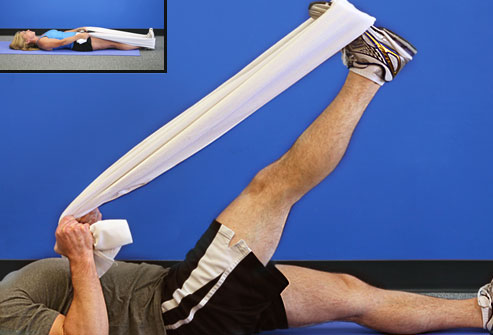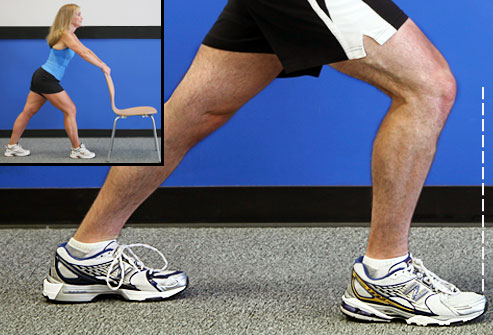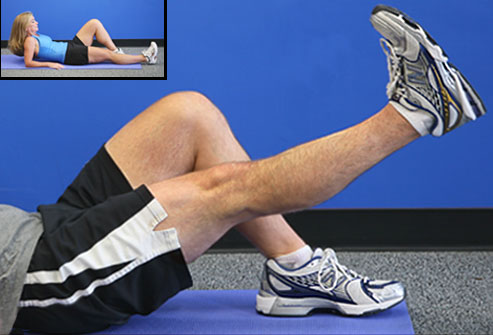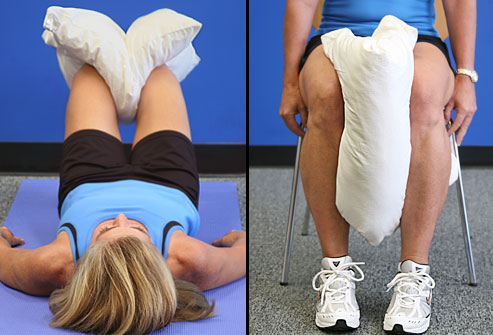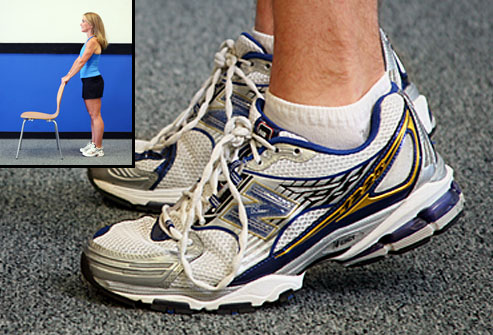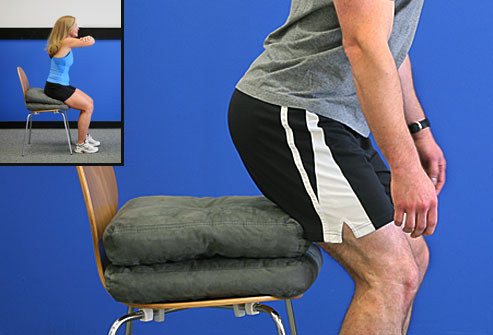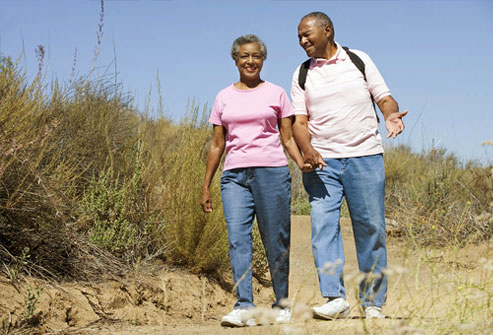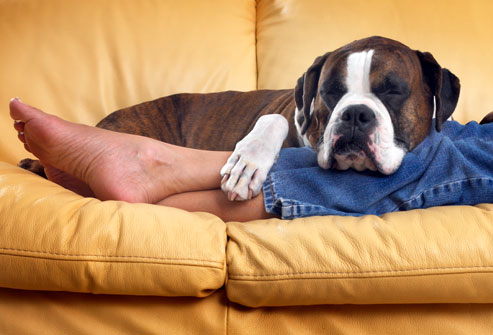Living With Knee Pain: Exercises for OA of the Knee
Hamstring Stretch
Stretching improves range of motion and keeps you limber.
To get the most out of your stretches, warm up first with a 5-minute walk. To stretch, lie down. Loop a bed sheet around your right foot. Use the sheet to help pull the straight leg up and stretch it. Hold for 20 seconds, then lower the leg. Repeat twice. Then, switch legs.
Calf Stretch
Stretching exercises also help prevent pain and injury.
To do a calf stretch, hold onto a chair for balance. Bend your right leg. Step back with your left leg, and slowly straighten it behind you. Press your left heel toward the floor. You should feel the stretch in the calf of your back leg. Hold for 20 seconds. Repeat twice, then switch legs.
For more of a stretch: Lean forward, bending the right knee deeper. Don’t let the right knee go past your toes.
Straight Leg Raise
Build muscle strength to help support weak joints.
Lie on the floor, upper body supported by your elbows. Bend your left knee, foot on the floor. Keep the right leg straight, toes pointed up. Tighten your thigh muscles and raise your right leg.
Pause, as shown, for 3 seconds. Keep your thigh muscles tight and slowly lower your leg to the ground. Touch and raise again. Do two sets of 10 repetitions. Switch legs after each set.
Quad Set
Is the straight leg raise too tough? Do quad sets instead. With these you don’t raise your leg. Simply tighten the thigh muscles, called the quadriceps.
Start by lying on the floor. Keep both legs on ground, relaxed (left photo). Flex and hold the left leg tense for 5 seconds (right photo). Relax. . Do two sets of 10 repetitions. Switch legs after each set.
Seated Hip March
Strengthen your hips and thigh muscles. It can help with daily activities like walking or rising from a chair.
Sit up straight in a chair. Kick your left foot back slightly, but keep your toes on the floor. Lift your right foot off the floor, knee bent. Hold the right leg in the air 3 seconds. Slowly lower your foot to the ground. Do two sets of 10 repetitions. Switch legs after each set.
Too hard? Use your hands to help lift your leg.
Pillow Squeeze
This move helps strengthen the inside of your legs to better support your knees. Lie on your back, both knees bent. Place a pillow between the knees.
Squeeze your knees together, squishing the pillow between them. Hold for 5 seconds. Relax. Do twosets of 10 repetitions. Switch legs after each set.
Too hard? You can also do this exercise while seated.
Heel Raise
Stand tall and hold the back of a chair for support. Lift your heels off the ground and rise up on the toes of both feet. Hold for 3 seconds. Slowly lower both heels to the ground. Do two sets of 10 repetitions.
Too hard? Do the same exercise while sitting in a chair.
Side Leg Raise
Stand and hold the back of a chair for balance. Place your weight on your left leg. Stand tall and lift the right leg out to the side — keep the right leg straight and outer leg muscles tensed. Hold 3 seconds, then slowly lower the right leg. Do two sets of 10 repetitions. Switch legs after each set.
Too hard? Increase leg height over time. After a few workouts, you’ll be able to raise your leg higher.
Sit to Stand
Practice this move to make standing easier. Place two pillows on a chair. Sit on top, with your back straight, feet flat on the floor (see left photo). Use your leg muscles to slowly and smoothly stand up tall. Then slowly lower again to sit. Be sure your bent knees don’t move forward of your toes. Try with your arms crossed or loose at your sides.
Too hard? Add pillows. Or use a chair with armrests and help push up with your arms.
One Leg Balance
This move helps you bend over or get in and out of cars.
Stand behind your kitchen counter, without holding on, and slowly lift one foot off the floor. The goal is to stay balanced for 20 seconds without grabbing counter. Do this move twice, then switch sides.
Too easy? Balance for a longer time. Or, try it with your eyes closed.
Step Ups
Do this to strengthen your legs for climbing stairs.
Stand in front of stairs and, holding onto the banister for balance, place your left foot on a step. Tighten your left thigh muscle and step up, touching your right foot onto the step. Keep your muscles tight as you slowly lower your right foot. Touch the floor and lift again. Do two sets of 10 repetitions. Switch legs after each set.
Walking
Even if you have stiff or sore knees, walking may be a great exercise. Start slow and keep at it. Walking can ease joint pain, strengthen leg muscles, improve posture (stand tall when you walk), and improve flexibility. It’s also good for your heart.
If you’re not active, check in with your doctor before starting a new exercise program.
Low-Impact Activities
Other exercises that are easy on the knees include biking, swimming, and water aerobics. Water exercise takes weight off painful joints. Many community and hospital wellness centers, gyms, and pools offer classes for people with arthritis.
Being active may also help you lose weight, which takes pressure off joints.
For favorite activities, like golf, ask your doctor or physical therapist about how to modify painful moves.
How Much Exercise?
Thirty minutes a day is a good goal. Start small, such as 10 minutes every other day. If you don’t have pain, exercise more to meet the goal.
When you start to exercise, some mild muscle soreness is normal. It’s OK to work through it. Check with your doctor if you want to try over-the-counter pain relievers like acetaminophen, ibuprofen, or naproxen to help the soreness. Ice can also help. Don’t ignore pain in your joints, though. Contact your doctor if you have any.
